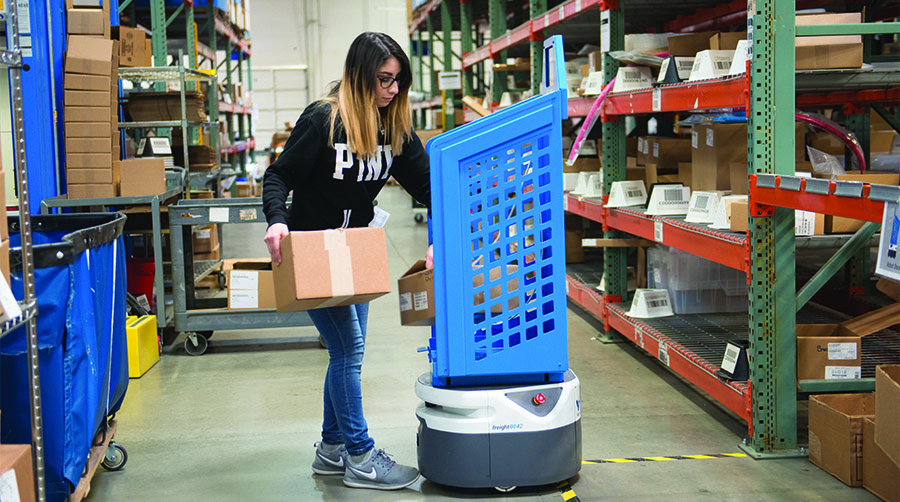The warehouse and DC industry is under unprecedented and ever-evolving pressure to continue its drive toward the optimization of efficiency, accuracy and cost containment, which in turn is supercharging the exploration and implementation of automation and artificial intelligence solutions in the industry.
Our own market study verified this fact, while also uncovering that many challenges remain in company knowledge and skills to deploy AI-based systems.
To shed light on this somewhat mystifying area, we are highlighting ways companies can begin their AI journey in this Fast Start Opportunities for AI blog series. Most recently, we covered the benefits that can be derived from performance management powered by AI. This week we are exploring the ability of AI to optimize the orchestration of workflows between systems and labor.

Enhancing Workflows
As an example, consider challenges related to the induction of totes and labor allocation within a large pick module:
- Poor sequencing of tote induction results in straggling totes in the system that do not make it down to shipping in time (poor batch integrity).
- Poor pacing of induction results in deprivation of work or backup of totes at divert points.
- Lack of visibility to work and changing labor allocation needs results in team members looking for work or picking out of batch sequence.
AI can be used to implement a solution that uses pick rates by zone, labor in zone, totes, and pieces traveling/waiting/being picked in each zone to provide visibility and directives on which totes (order/batch) need to be inducted at which induct point, and how much labor is needed in each zone at that time. In other words, optimizing the movement of people and totes through the pick module for maximum efficiency.
Elevating the Collaboration of Robots and People
As another example, there is a real need for the orchestration of robots and people within warehouses. Depending on the type of robot, there can be different use cases. Let’s consider autonomous mobile robots that serve as a multi-position cart for order picking. Without orchestration, a work execution system simply directs a robot to a location, then a nearby user logs into that robot and delivers one or more picks to the robot. After completing those picks, the user must find the next closest robot or perhaps query the system to be directed to a robot. As you can imagine, this process is not ideal.
With an AI approach, the system can automatically perform orchestration to optimize both the robot’s and picker’s time simultaneously. This is accomplished in part by machine learning based predictions about where the robots and pickers will be located in the future, as well as by a process called Deep Reinforcement Learning, whereby the system learns by experience the best policies to obtain the desired benefits – in this case how to make the best use of the picker’s time.
Our next post in the series, coming soon, will delve into dynamic slotting and its ability to drive up to 20% savings in labor costs and a 20-40% increase in throughput.
To get a more in depth understanding of AI and the benefits it can provide in your operation, check out our Achieve Your AI Potential white paper, and stay tuned for the rest of our Fast Start Opportunities for AI blog series.
About Lucas Systems, Inc.
Lucas Systems helps companies transform their distribution center operations and continuously adapt to changing market dynamics. We dramatically increase worker productivity, operational agility, and customer satisfaction.
Our solutions are built on 23-plus years of deep process expertise and smart software using AI and voice technologies. Our solutions feature Jennifer™, the brain, voice, and orchestration engine that drives performance improvement gains. Make the smartest moves at the lowest cost with Jennifer™. For more information, visit www.lucasware.com.





